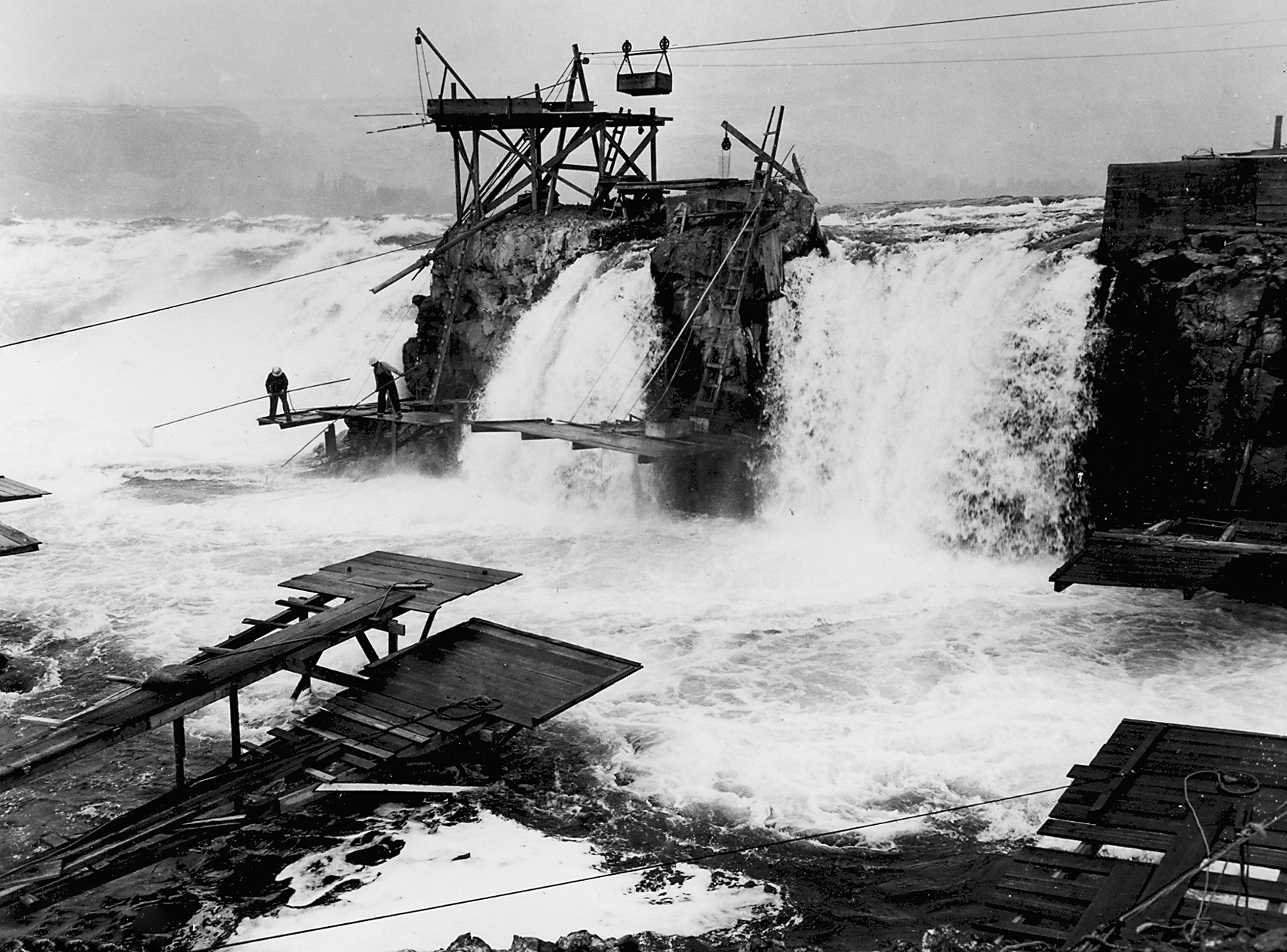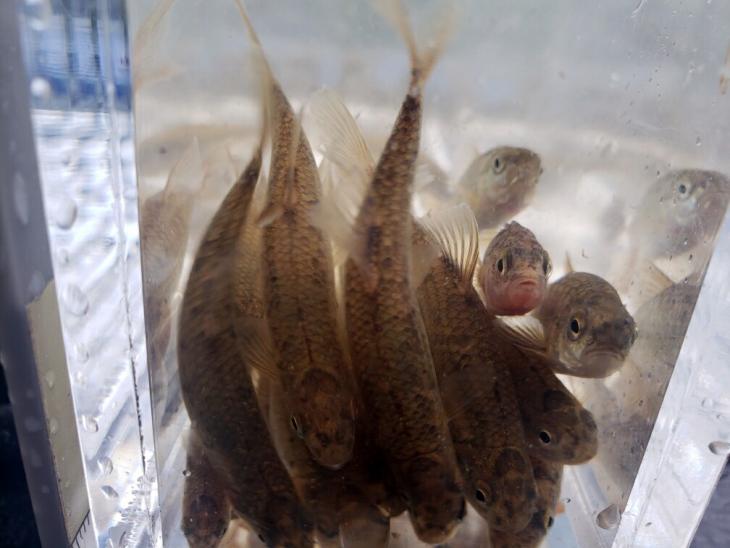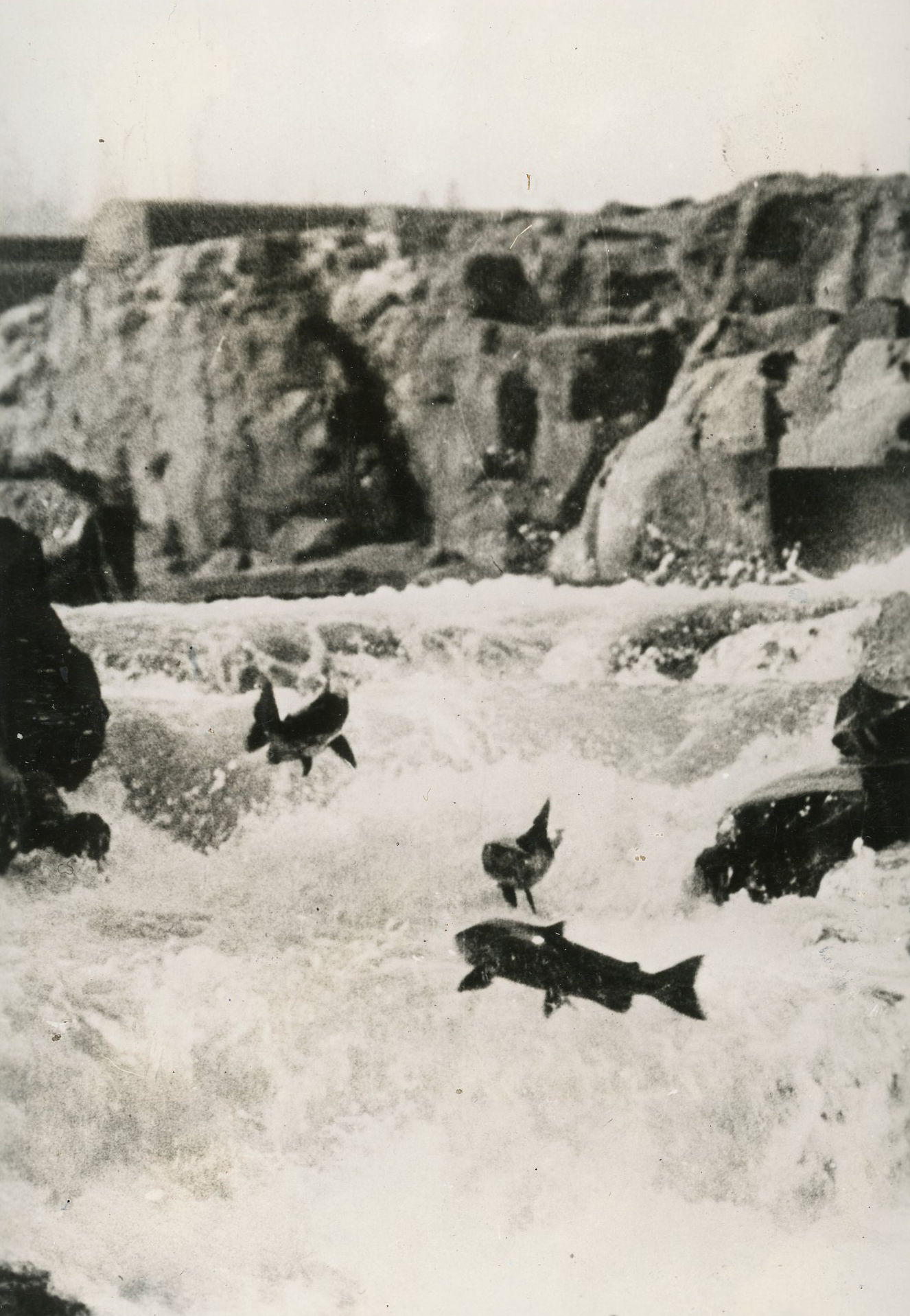Imagine a single salmon weighing eight-five pounds or more. These summer-run Chinook salmon, named "June hogs" for their hog-like fatness from back to belly, once plowed the waters of the Columbia from the estuary to the upper reaches of the river in British Columbia. They were prized by lower-river gillnetters, native peoples, and sport fishers.
One of the many summer Chinook populations was in the Spokane River, where the fish were a staple in the diets of the Spokane and Coeur d'Alene tribes. Grand Coulee Dam, completed in 1941, wiped out those fish populations and all other upper-Columbia salmon and steelhead, as the dam blocked access to more than 1,100 miles of spawning habitat.
Salmon and steelhead were prolific, and large, above Grand Coulee Dam before it was built, with particularly large runs on the Spokane River. There were three primary Indian fishing sites on the river between its confluence with the Columbia and Spokane Falls, at the present-day City of Spokane. One of these, Little Falls, was 28 miles upstream from the confluence. There, the missionary Rev. Cushing Eells, who cofounded the Chamokane Mission on Chamokane Creek, a Spokane tributary, with Elkanah Walker and their wives, wrote on February 25, 1840, about Indian fishing at the falls in June: “If I judged correctly, I saw there at one time near 1,000 persons, and the number was increasing rapidly. From four to eight hundred salmon were taken in a day weighing 40 pounds apiece.”
June hogs had economic and cultural importance to Oregon tribes as well. For millennia, mid-Columbia tribes who caught the fish at Celilo Falls used them for food but also for spiritual, ceremonial, and trade purposes. The fish were also prized by canning companies on the river. Francis Seufert, a fish canner at The Dalles, wrote: "Because of their size, when you packed them into cans, only one slice...was necessary to fill the can."
The river still yields the occasional large Chinook, forty or fifty pounds, destined perhaps for the Hanford Reach of the Columbia or the mountains of Idaho in the Snake River drainage. Only the oldest salmon, four or five years, can grow to such size. Even so impressive a modern fish cannot match the weight and size of many of its ancestors.
-
![]()
June Hogs, Astoria, c. 1910.
Courtesy U.S. Department of Fish & Wildlife
Related Entries
-
Celilo Falls
Celilo Falls (also known as Horseshoe Falls) was located on the mid-Col…
-
![Columbia River]()
Columbia River
The River For more than ten millennia, the Columbia River has been the…
-
![Gillnet fishing]()
Gillnet fishing
A gillnet is used by fishermen throughout the world to catch various sp…
-
![Oregon Chub]()
Oregon Chub
Oregon chub (Oregonichthys crameri) are small minnows that exist only i…
-
![Salmon]()
Salmon
The word “salmon” originally referred to Atlantic salmon (Salmo salar),…
-
![Seufert Brothers Cannery]()
Seufert Brothers Cannery
Seufert Brothers Company was the leading salmon packer on the Middle Co…
Map This on the Oregon History WayFinder
The Oregon History Wayfinder is an interactive map that identifies significant places, people, and events in Oregon history.
Further Reading
Seufert, Francis. Wheels of Fortune. Portland: Oregon Historical Society, 1980.
Ulrich, Roberta. Empty Nets: Indians, Dams, and the Columbia River. Corvallis: Oregon State University Press, 1999.
Upper Columbia United Tribes Fisheries Center, Compilation of Information on Salmon and Steelhead Total Run, Size, Catch and Hydropower Related Losses in the Upper Columbia River Basin, Above Grand Coulee Dam, Fisheries Technical Report No. 2, Eastern Washington University, Department of Biology, December 1985.







